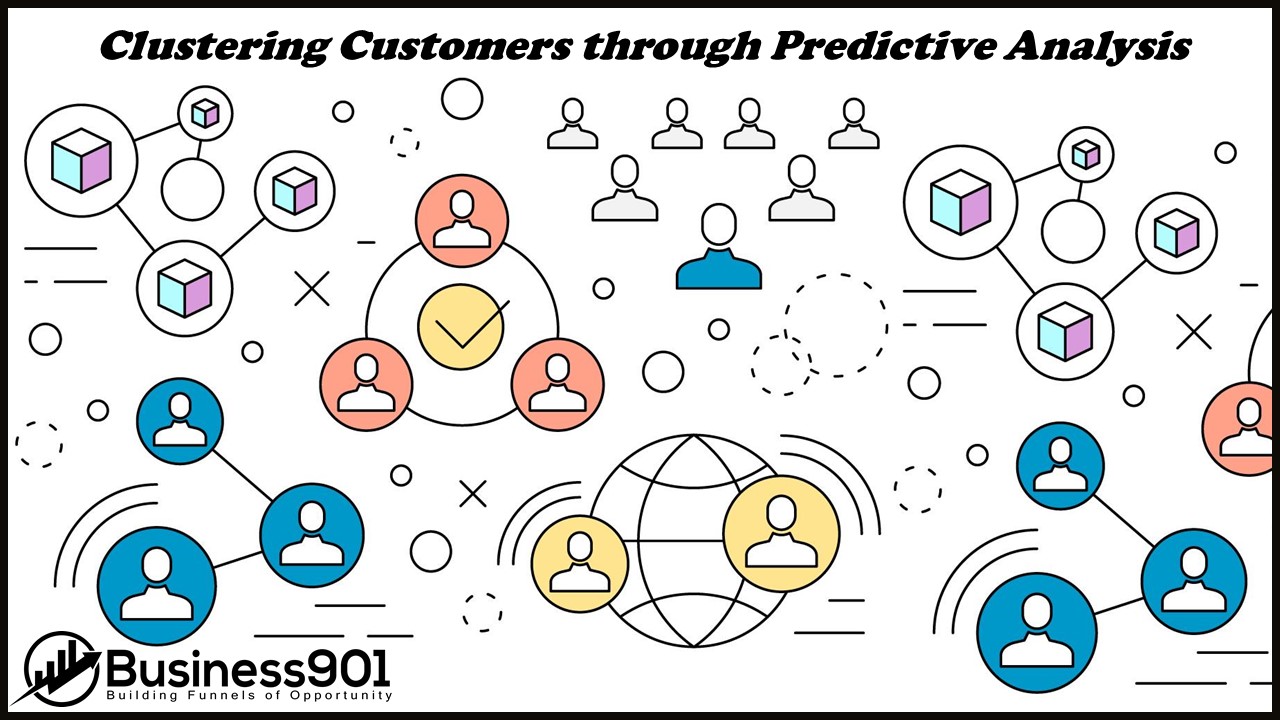Predictive analytics can help businesses understand customer behavior and predict future buying patterns. To do this, businesses must determine how to collect and manage their customers’ data effectively. Customer data is the lifeblood of predictive analysis because it provides insights into who your customers are, what drives them to buy from you, and how they find you. This article covers a few things you need to know about using predictive analytics in your business. Read on to learn more about how predictive analytics works, its benefits for your company, and how you can use this type of operational strategy in your organizational goals.
Grouping customers into clusters using Predictive analysis: Clustering customers into groups using predictive analysis is one way to determine what your customers want and how they’ll act next. Using data collected from past customer behavior, you can cluster similar customers. This helps to provide a better understanding of your customer base. After clustering previous customers, the next step would be to put these groups of people in order of value. Then, you would use that information to decide which marketing campaigns will be most effective for the highest return on investment (ROI).
Leveraging the right customer data and insights: Predictive analytics is a powerful tool that allows companies to uncover insights they never knew they had. It enables you to manage your customer data and gain new insights into their behavior. Using predictive analysis, you can better understand your customers and what drives them to buy from you in the first place. Businesses need to know how to collect and manage customer data when implementing this strategy effectively. They should also be able to make sense of the information gathered by implementing the right analytics tools. Predictive analysis is often a journey, but as long as you have the correct customer-centric data, it can provide invaluable insights for your business.
Which Data is Best for Cluster Analysis: The type of data you use for predictive analysis depends on your needs. If you want to analyze the behavior and buying patterns of a group of customers, customer data is best. However, demographic data is better if you need to forecast the future spending habits of a targeted demographic, such as men between 18-40. Keeping this in mind, businesses can then decide which type of data they want to use during their predictive analysis and how they want to approach it.
Uncovering Hidden Patterns with Predictive Analytics: Predictive analytics helps businesses find patterns in the customer data they collect to help them understand customer behavior and predict future buying patterns. Data collection is important as it provides insights into your customers, what drives them to buy from you, and how they find you. The article focuses on how predictive analytics works and its benefits for your company.
Finding Trends with Predictive Analytics: Predictive analytics analyzes past events to expect future trends. This data can be collected through customer data, surveys, and third-party sources (such as transactional information). There are three key steps in using predictive analytics:
- Data collection involves getting customer data from your business’s database and storing it outside the organization. This data can then be analyzed by predictive analysts, allowing for a better understanding of where your customers are coming from and what drives them to buy from you.
- Data analysis is the process used to determine patterns within your customers’ buying habits. With this information, businesses can formulate strategic plans to target new customers better and increase brand awareness. This generally involves cross-referencing customer data with other available information (e.g., Google Analytics) that provides insights into customers’ purchasing decisions.
- Data management refers to storing your collected and analyzed customer data so business decision-makers can access it anytime. It also includes the processes necessary to ensure these assets are protected internally and externally.
Using Predictive Analysis to Identify Adjacent Clusters: One of the most common approaches to predictive analysis is clustering. Clustering helps businesses identify customer segments that share certain behaviors and characteristics, then target them with marketing messages. For example, you might use clustering to identify customer segments who are more likely to make a purchase online in the next six months.
Using Predictive Analysis to Identify Potential Prospects: The first step in using predictive analysis to identify potential prospects is figuring out how to collect customer data. You need to understand what information is available about your customers so that you can effectively curate a customer database. You should also use predictive analytics to determine specific locations, personas, or products driving your business’s top revenue streams. This will help you pinpoint the demographic groups you need to focus on and give you a clearer picture of who is most likely to buy from your company. In addition, it will help with product development because it will allow you to define more specific requirements for your audience and tailor product features accordingly.
Key Takeaway: Predictive analysis predicts future patterns in the likelihood that customers will make decisions about your company. – Before implementing predictive analysis, it’s important to clearly understand what your company does, who your customers are, and how they find you. – Customer data is the lifeblood of predictive analysis because it provides insights into customer motivations, behaviors, and purchasing patterns.

